The History of the Jews of Mir [1.1]
by Dr. N.M. Gelber [1.2]
Translation by Aza Hadas [1.3] |
Notes relating to translation
1.1 Sefer Mir Edited by: N. Blumenthal. Published by the "Encyclopedia of the Diaspora" in Jerusalem, 1962
1.2 Dr. N.M. Gelber (1891 - 1966) was a professional historian who wrote history chapters for several Yizkor books and was the editor of Memorial to the Jews of Drohobycz, Boryslaw and surroundings.
1.3 History of the Jews of Mir, the first section of the Mir Yizkor Book, was translated by Aza Hadas, except for the initial translation of the first page which was by Sarah Lasry. Later translation of the first page by Rafi Rasin. |
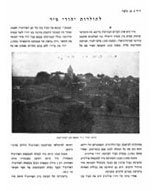 [1.28] [1.28]
Mir is one of the ancient cities in Lithuania.
Fierce battles were fought in Mir between Prince Witold [1.4] against the crusaders who
supported his enemy Shvidrogialo [1.5]. In the year 1395 the Crusaders invaded
Mir, set it on fire and destroyed it completely. In the year 1434 the
city was given, along with all its property, to Semyon
Gedygoldovichu, the castellan of Vilna[1.6]. He gave over the entire
estate to his daughter Anna Botrimov. When she died in the year
1476, the city was passed on to her relative Yarzi Ilyinich.[1.7]
During the years 1490-1568, Mir belonged to the Ilyinich family [1.8], who
built a palace with a perfect fortress, organized the
administration of the property and also expanded the boundaries of
the estate by acquiring new villages in the surrounding area.
After the death of Yuri Ilyinich, his son Shchastny (Felix
Schastny) inherited the city. He married Sophia, the daughter of Jan Mikolai
Radziwill. Upon Shchastny death, Prince Ferdinand
took the education of his son, Yarzi Locher, upon himself. Yarzi won the title
Count of the Roman Empire" (1555) for his excellence and distinction in the army.
Yarzi died childless and lonely (1568). All his belongings were inherited by Mikolai Kryshtofu Radziwill who was known by the nickname "The Orphan".
From the year 1568, Mir belonged to the Radziwill family from Nesvizh.
Mir was 4 miles away from the center of the Nesvizh estate and
remained the property of the Radziwill family. Young Radziwill was
sent for advanced study to the court of the Czar until 1813.
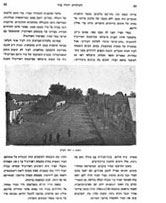 (Page 31) [1.9] In the beginning of the Radziwill [1.10] era, Mir was a small town, made up of miserable wood houses. The Christian population was scant. It lacked a status of the German municipal governance, like most of the cities of Poland and Litta. The owners of the town paid it little attention. In 1579, Mikolai Kshishtof Radziwill gave the residents "proof of existence" as a basis for municipal standing, but with limited authority. In that paper, the residents were promised protection by the owner and defense on market days from attacks, imprisonments and such woes. Mikolai also saw to the beautifying of the town and erected several public buildings: a church, hospital, city hall with a tower, planted a few beds, prepared roads and a water reservoir. (Page 31) [1.9] In the beginning of the Radziwill [1.10] era, Mir was a small town, made up of miserable wood houses. The Christian population was scant. It lacked a status of the German municipal governance, like most of the cities of Poland and Litta. The owners of the town paid it little attention. In 1579, Mikolai Kshishtof Radziwill gave the residents "proof of existence" as a basis for municipal standing, but with limited authority. In that paper, the residents were promised protection by the owner and defense on market days from attacks, imprisonments and such woes. Mikolai also saw to the beautifying of the town and erected several public buildings: a church, hospital, city hall with a tower, planted a few beds, prepared roads and a water reservoir.
At some time, gypsies settled in Mir. They were horse traders and some had become well-to-do. They lived inside the town and built homes under the owner's protection. They had a chief [1.11] who, between 1778-1790, had to be approved by the King's office in Warsaw. He was quite wealthy. When he died in 1790, The Gypsies left Mir and scattered in the land.
(page 32) Since the rule of Vitold [1.4], there were also Tatars in Mir, mostly horse and cart drivers. After a time they assimilated with the other residents.
The town suffered, in 1655, when Swedes invaded aided by Bugoslav Radziwill, who was on bad terms with the town's owner, Kazimir Radziwill.
The economy of Mir was based on agriculture. Most occupants had gardens, and only a few were in crafts. The law was at the mercy of Prince Mikolai Krzysztof, who, in 1579, promised the residents ownership of their properties.
The last Radziwill, Dominic [1.12], died in 1813, and then the town passed down to his daughter, Stephania, who married Prince Leon Vitgenshien [1.13], and then to his heirs, the family of Prince Mirsky [1.14], until the Russian revolution in 1917.
In the 17th and 18th centuries, Mir became a merchant town, known as a center for horse and fur trades.
|
1.4 Witold was his Polish name. According to the Encyclopaedia Britannica, he was a Lithuanian national leader, b. 1350, d. 1430, named Vytautas the Great. Vytautas was a great warrior who broke up the power of the Teutonic knights – crusader knights. Wikipedia article about Witold. (From Joanne Lafler)
1.5 Svitrigaila is the Lithuanian version of his name. Further information on the early history of the Jews of Lithuania can be found on-line. (From Joanne Lafler)
1.6 In 1434, Grand Duke of Lithuania Zhygimont Keystutovich gave Mir to Semyon Gedygoldovichu. (from a Google translation of a Russian language history of Mir)
1.7 Yarzi or Yuri
1.8 From Wikipedia (automaticaly translated from Russian), we learn that Ilyinich (Ukrainian Ільїничі, Pol. Ilinicz, lit. Iljiničiai, bel. Іллінічы) was a Lithuanian noble family, known from the mid-15th century. In 1555, a descendent Yuri Ilyinich was granted the title of Count of the Holy Roman Empire in Mir.
- Ivashko Ilyinich - the first known representative of the family, in 1487-1489 GG governor of the Polish king Casimir of Bohemia in Smolensk (his position was received a reward for saving the life of the monarch in a battle). He was elevated to a knighthood with the award of a coat of arms.
- Yuri Ilyinich (? - 1526) - Lithuanian marshal and governor of Lida. Settled in Mir after the death of his father in 1495. He was a soldier in Moldavia during the Polish-Turkish war. In the 1520s he began construction of the Mir Castle.
- Nick - son, Yuri, died after his father.
- Stanislav (1500 - 1531) - son of George. Dies after Nicholas, after a short reign. As rumored, the cause of death was poisoning.
- Jadwiga - the only daughter of Yuri - did not reach her 30th birthday.
- Jan (~ 1495 - 1536) - son of George. As a result of family deaths and the partition of inheritance, all possessions except in the Mir Castle, are disposed of.
- Schastny (~ 1505 - 1542) - son Yuri, who has outlived all his brothers and inherited all the family properties. Schastny aka Felix Schastny, married to Sophia Radziwill, who died before her husband. Schastny's son Yuri (~ 1535 - ~ 1569) is the last descendent of the Ilyinich family. His guardian is Nikolai Radziwill the Black (Grand Chancellor of Lithuania) in the service to the court of Ferdinand II. In 1555, Yuri got the title of Count. On his deathbed, Yuri bequeathed all his possessions to Nicholas Kryshtofu Radziwill the son of his guardian. Thus all Ilyinich property, together with the title of Count of Mir passes to Radziwill.
|
1.9 To understand some of the governmental changes in the region, see the map/slide show on Territorial changes of Poland from 1635 to 2009
1.10 Often spelled Radzivil
1.11 MARCINKIEWICZ, JAN (fl. 18th century). Russia. Bear trainer. In 1778, he set up a school for bear trainers in Russia and held the title of “Gypsy king.” After the failure of the so-called Katyushka Revolt against the tsar, he fled to Turkey. (From Historical Dictionary of the Gypsies by Donald Kenrick.
1.12 Dominik Hieronim Radziwiłł (1786–1813)
1.13 Prince Leon Vitgenshien aka Ludwig zu Sayn-Wittgenstein-Berleburg was born June 8, 1799 in Kovno, and died June 20, 1866 in Cannes. He was a Russian aristocrat of German descent. Among his properties were Mir Castle Complex and Verkiai Palace.
- He was the eldest son of Russian Prince Peter of Sayn and Wittgenstein. He was half-Polish through his mother and was formally known in Russian as Lev Petrovich Witgenstein.His career came to a halt when his participation in the Decembrist societies was revealed in 1826. He secured a pardon through the interference of his father.
- In St. Petersburg, on June 14, 1828 Ludwig married Princess Caroline (Stefania) Radziwill and thus came into possession of the biggest privately-owned estate in Central Europe, covering roughly 12,000 km of fields, forests, villages and towns in the former Polish-Lithuanian Commonwealth. (From Wikipedia)
1.14 Prince Nikolai Ivanovitch Sviatopolk-Mirskii (1833 - 1898) was a Russian cavalry general and politician. In 1895 he purchased the Mir Castle Complex, repaired and rebuilt it. Although he descended from Polish nobility, he was brought up in Saint Petersburg and considered himself Russian. |
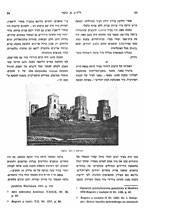
(page 33) After the division of Poland [1.15], the town declined and in the 19th century Mir was a
poor little town with no economic base.
In 1885, about 4000 people lived in Mir, in 700 wood houses. There were very few brick houses. The town had a rural elementary school and a hospital. In 1921 there were 3,741 residents and of them 2,074 were Jews, 55.4% of the population.
In independent Poland, Mir was part of the province of Nowogródek. [1.16]
Chapter 2
The Jewish settlement in Mir began in the 17th century. Bernard Tanner, the author of "A Voyage of Shelikhut from Moscow to Polin" [1.17], in the year of 1678, tells: "We have come to Mir of Prince Radzivil. Mir is populated with very many Jews"(1). At that time it was already a large Jewish settlement. The trading ties of the Jews had made Mir into a true center of commerce, that had kept growing due to the large fairs that had attracted merchants, Jews and non-Jews from Poland, Lita [1.18] and other countries. According to documents from 1684, the markets in Mir specialized in furs, that were purchased by Jewish exporters from Lita for the merchants of Leipzig.
The furs of Mir were much in demand (2). Often, the Leipzig merchants came to Mir, themselves, to buy furs.
The trade of horses, oxen, hides, wax, milk, grain, colonial goods, salted fish, wine, soap, iron, fabrics especially from Lita, ready to wear clothes, and haberdashery from Germany.
Since 1672, Mir fairs traded in tobacco. In 1671 the Lita's Seym [1.19], added tax to the ordinary tobacco (farynska tiutun) [1.20], 5 zloty [1.21] per liter [1.22]. A Jew from Minsk was appointed to supervise this tax.(3)
Besides commerce, Mir was also known as a stopping place, where merchants and travelers changed carts and horses. According to an expense list from 1692, a Jewish wagoner had been paid 10 zloty for a drive of 18 miles.(4)
In the 17th and 18th centuries, all commerce was in the hands of the Jews. In addition to the trade of furs and hides, wax, salted fish and textiles, the aristocracy from the area would come to Mir to order wedding gifts for their daughters.(5)
|
1.15. There were territorial divisions of Poland in 1772, 1793 and 1795 by Russia, Prussia, and Austria that progressively reduced Poland's territory until it ceased to exist as a state. See map.
1.16. Geographical divisions
Around 1900
Town – Mir
District - Novogrudok
Province - Minsk
Country - Russian Empire
Around 1930 (between the wars)
Town – Mir
District - Stołpce
Province - Nowogródek
Country – Poland
1.17. Shelikhut means something like "carrying a message"
1.18. Lita is another name for greater Lithuania. After 1569, Lithuania included what had been the Grand Duchy of Lithuania and the Kingdom of Poland as well as what is now Belarus and Ukraine.
1.19. The Seym was the parliament of Lithuania. It was composed of noble landowners.
1.20. 'farnska titun' Polish words.
'titun' = tobacco
'farynska' = nearest word is 'faryna' which was used to describe brown sugar. This may refer to the sweet smelling brown tobacco leaf. (Information provided by Z. M. Cariuk)
1.21. zloty - Polish coin with an original value of 30 groszy
1.22. The metric system was introduced into this area by Napoleon by 1812. |
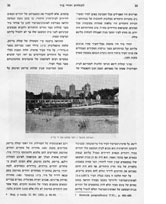 (page 35) The Jewish stores were stocked with high quality merchandise of all sorts, which they had brought from the fairs abroad. This fact was also known outside the town and attracted customers from the aristocracy in the whole of Lita. (page 35) The Jewish stores were stocked with high quality merchandise of all sorts, which they had brought from the fairs abroad. This fact was also known outside the town and attracted customers from the aristocracy in the whole of Lita.
The Jews of Mir lived under the protection of the town owners, who defended them and their rights from the oppression of the bureaucrats who managed the affairs of the town. This protection was especially notable in the dispute erupting in 1685.
Representatives of the congregation in Lita, including the Treasurer and vice-Chancellor, complained to Catherine Sapicha of the house of Radziwill, against Marotovsky, the administrator of the town of Mir, who, against her wishes and instructions, brings to his court of law, Jews in Mir and Jews who came to the fairs and fined them sums of money and even imprisoned them.
He also tried in his court, cases between Jew to Jew, which were solely the authority of Jewish courts. He also used to block the roads to the Jews, which caused the Jews much damage.
Based on this complaint, the owner of the town in 1685, presented to the administrator and his subsequent administrators in the future, a written instruction, with a threat of severe punishment, to not litigate cases of Jews in the court of law of the administrator and to not impose fines or punishment on them, but to move the
(Page 36) cases of Jews who come to the fairs to the Jewish court of law. At the same time the princess gave the administrator a clear direction to protect the residents of Mir from wrongs done by strangers or Jews, but not to impose harsh demands.
The instruction was registered by the lobbyist of the congregation of Brisk, Shlomo Michaelovich, on the 14th of July 1685 in Brisk in the book of the "Grod" (6) [1.23]. The residents of Mir, a private town, both Jews and other town people, were all subjected to the same regulations, which had often brought cooperation between them when needing to defend themselves against the administrators.
|
1.23. Grod - a slavic word for town or city. In the Middle Ages it served as a fortification and a center of political or administrative authority; some later developed into towns |
In 1681, at the time of the disagreements between the congregations of Brisk and Minsk about the
autonomy of the congregations, the leaders of the Brisk Congregation would ban merchandise of Jewish merchants from Minsk, and would obstruct their participation in the fairs at Mir.
In spite ot the warning of King John Sobieski to the four communities of Vilna, Brisk, Slotzk
and Minsk, not to dare attack Jewish merchants on roads, fairs and markets, the Jews
of Brisk wrestled from Jewish merchants from Minsk, when they came to the fair in Mir, on November 13 1681, furs, fabrics, gems from Italy, Hebrew books and cash, worth 50.000 zloty, while the debt [1.24], did not exceed 5,000 zloty.
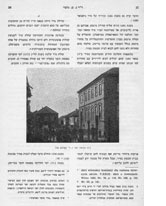 (Page 37) The same thing repeated in 1684 and in the fair at Mir in January 1685. (7) (Page 37) The same thing repeated in 1684 and in the fair at Mir in January 1685. (7)
In 1684, Avraham Son of Arieh (Leibovitch), a delegate from the congregation of Minsk, presented a letter of protestation to the Starosta [1.25] of the town Mir, and also letters of recommendation from the Marshall of Bratslav, who recommended the congregation of Minsk in the matter of disturbances and attacks on the merchants of Minsk, because of the entanglement with the leaders of Brisk, who have taken goods from them and did not let them come to the synagogue in Mir.
In response to the complaint, the Starosta in Mir declared on the 15th of May 1684, that the Jews of Minsk, could come to the fairs with their merchandise, as custom was previously and they should not tolerate attacks from the Jews of Brisk. He also promised them (the Minskers), that they could go to the synagogue in Mir, and in any case of trouble he would be on their side and protect them.(8) [1.26] |
1.24. debt or dues, translation of the word KHOVE
1.25. Starosta - In the Grand Duchy of Lithuania and Poland the starosta was a representative of the king or grand duke in a territory (voivodeship).
1.26. From Timeline of Minsk - "Despite of the fact, that Belarus, including Minsk, was recognized as independent area, Brest kahal influenced seriously on Minsk affairs for a long enough time after it. In 1681 during a fair in Mir (a shtetle in Novogrudok Province of the Great Lithuanian Princedom), Brest Jewish supervisors arrested wide assortment of goods, brought there by Minsk Jewish merchants, including jewelry and some other expensive things. After that attack Minsk Jewish merchants almost stopped their visits to Mir fair. As it was very unprofitable for Mir and even State Treasure, Mir mayor and chief executive asked Minsk Jewish merchants to come and guaranteed their security. Same invitation was sent to Minsk Jewish community by the Great Lithuanian Chancellor Duke Oghinsky. Moreover, in 1684-85 the King of Rech Pospolitaya Yan III Sabessky personally ordered Brest kahal not to oppress Minsk merchants in any case."
1.28. Click on any image of a Yizkor page to read a larger version and see the photos.
notes - Reeva Jacobson Kimble
completed February 2010
|
Chapter 3
The congregation of Mir paid in 1673, according to the estimate of the meeting of the council in Seltz, with the congregation of Nashwiz, 45 zloty per person and 4 zloty for "porvrotny (or "forbotny"), which was a tax of return (10).
In 1700 the council in Seltz had decided to collect 1160 zloty. (11).
In 1713, according to the proportioning at the meeting of the Council in Brisk,
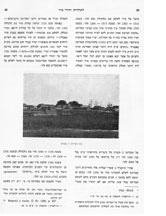 (Page 39) Mir had to pay 950 zloty per head, in 1714 — 1200 zloty, in 1717 — 1200 zloty. In 1720 a dispute erupted between the leaders of Mir and the officers of the State about some financial agreement between them. On the 9th of Shevat 1720, at the meeting of the State Council, it was decided on a compromise, according to which the leaders of Mir were to immediately present to the rulers of the congregation of Horadny promissory notes to pay two debts of (Clergy ?) in Horadny in the sum of 1000 zloty, two of Mirsky for 1000 zloty, total of 2000 zloty. (Page 39) Mir had to pay 950 zloty per head, in 1714 — 1200 zloty, in 1717 — 1200 zloty. In 1720 a dispute erupted between the leaders of Mir and the officers of the State about some financial agreement between them. On the 9th of Shevat 1720, at the meeting of the State Council, it was decided on a compromise, according to which the leaders of Mir were to immediately present to the rulers of the congregation of Horadny promissory notes to pay two debts of (Clergy ?) in Horadny in the sum of 1000 zloty, two of Mirsky for 1000 zloty, total of 2000 zloty.
(Page 40) After receiving these notes, the officers of the State, would be obligated, to pay the leaders of Mir the sum of 1200 zloty. This sum will be deducted from their payments to the State coffer, one third a year. If they would not turn in the notes (or receipts ), then the officer will be free of their obligation.
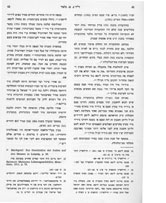
In the same year, 1720, the congregation of Mir paid 1350 zloty. Beside this, all the congregations in Lita, including Mir, sums (13) of 400 zloty for the legal case of the well known Mirer from Ablig (or may be Ublig) (14). Out of this sum they had to pay profits to the clergy of Nesvizh and Mir for the debt to the State, on top of paying 240 zloty
for some benefit of those clergy (15). In 1721 the Jews of Lita were required to pay 40.000 zloty to the General of the Army and 20.000 to the guards of the Tribunal.
The portions of Mir and Isklik came to 820 zloty each.
In the year 1730 they paid 1050 zloty and in 1731 — 1200. 1739—1170 and in 1740— 850.
In 1760 Mir paid 480 zloty. A much smaller sum than in previous years. At that period of time Mir had to pay on the account of groszy.
In the years of 1762 and 1763, 64 zloty.
In Mir the State Council convened on the 9th, 12th, and 13th of Shevat 1697 (16) , on the 11th and 15th of Shevat in 1702 and in the month of Kislev in 1751.
(Page 42) After the division of Poland and the annexation of of White Russia to Russia, Mir belonged to Novogrodk District, in Minsk gubernia.
In a census conducted in 1806 in Mir, 807 Jews were counted (344 men, 463 women).
Among the craftsmen and farmers there were 106 tailors, 5 smiths and 6 weavers. However, the census of the occupations was flawed and we do not have all the numbers.
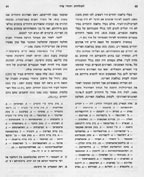
(Page 43) Jewish craftsmen were allowed, by law from 1804, to enter a craftsmen guild, if it was not against the City Privilege, but the Jewish craftsmen in Mir could arrive at that due the antagonism of the Christian ones.
In 1818 the number of Jews in the villages that were in the Mir church district, was 494. (26)
In the first half of the 19th century, there were many Jewish weavers. In 1831, there were 40 of them with their families. They did well economically, they settled and built houses and their products gained markets even outside the town. Their status was contentious though, due to the opposition of the Guild. The Christian weavers, incited by the Catholic priests in town, came out against the Jewish weavers, disrupted them by every possible means, and attempted to take away the privilege of this occupation from them.
They succeeded in their efforts with the local authorities, to reenact the old Privilege of Prince Radziwill from 1686, according to which the Jews were forbidden from entering the Weavers Guild and to weave at all.
(Page 44) The local authorities complied with their demand. In the year 1832, the head of the Jewish weavers turned to the Office of the Interior in Petersburg , with a plea. He emphasized the fact that the Jewish weavers have been weaving since their childhood, and that their whole families are involved in this occupation. Their appeal did nothing for them. On the contrary, after a long time, a response arrived from the Office of the Interior, stating that the local authorities were right in their decision to reenact the Privilege from 1686. (27)
The congregation of Mir became famous in the 19th Century, for its Yeshiva. (28) It was founded in 1815 and had become one of the most important ones in Lita. Thanks to the Yeshiva, its heads, its teachers and its scholars, Mir had become one of the strongest fortresses of the Orthodox Judaism in Lita, as well as all of Russia.
In the year 1847, the number of Jews in Mir arose to 2,273 souls. This increase in the Jewish population in the second half of the 19th Century, is shown according to the census of 1897; among the 5401 in the total population of Mir, 3310 were Jews. That is 61.5% of the population. In the census of 1921, the total population was 3742 residents, of them 2074 were Jews. (55.4%).
Original Footnotes (Some were in Polish, some in Hebrew)
1. Opisanje puteschestwia posolstwa w Moskwu 1678 Regesti y nadpisi II Nr. 1184, p. 42
2. Regesti y nadpisti II Nr. 1232; Dr. I. Schipper: Dzieje handlu zydowskiego na siemach polskich Warszawa 1937, p. 192. (History of the Jewish trade in Polish siemach Warsaw, 1937, p. 192)
3. Akti wilenskoj komissji. T. XXIX, Nr. 28. p. 36
4. Regesti y nadp. T. II, Nr. 1277. p. 86.
5. Slownik geograficzny T.VI., p. 485-486. (Geographical Dictionary)
6. Reg. y nadp. II. Nr. 1235, P. 64-65
7. Akti wilenskoj komissiji dla razbora drewnych aktow. T. XXIX. Akti o Jewrejach Wilno 1902, Nr. 78, p. 119, Nr. 108, p. 132.
8. Nr. 93, p. 141.
9. In the year of 1712, died in Mir, on his way to Eretz Israel, Rabbi Khaiim ben Rabbi Yosef Khazan, who was collecting funds for the Jews in Eretz Israel, and printed in Dihernfurt, part of his book "Ein Yehosef", new commentaties on the tract of Babba Kama, Babba Metziah, Shavuot, Sanhedrin and (???).
10. This was a joint tax to the Jews of Litta, sort of a compensation for allowing the Jews to come back to Lita after the expulsion.
11. The sums according to the ledger were the main tax that was collected from all the congregations for the coffer of the State Council for its expenses.
Those sums are according to Israel Halperin: "Additions and supplements to the ledger of the State of Lita, Jerusalem, 1795.
* Look at the article in "Mir in the council of the nations". (in Mir Yizkor Book)
12.
13. the Council would charge a sum for the whole State and the Major congregation would divide it between the the congregations in their domains.
14. Abligobligatia or maybe ubligobligatia) a promissory note for a congregation for the whole State, regarding paying of debts and payments to Clergy and various lenders.
15. Regesti y nadp. II Nr. 1596, p/237
16. Pinkas Litta, section (or article) 908 pp 240-241. Y. Halperin additions sections 49-50 pp.31-33.
Y. Halperin sections 56-58. pp 40-44.
17. Pinkas of the State of Litta sections 947-948 pp.257-259.
18. Y. Halperin additions section 83 pp.66-67.
19. Pinkas of the State of Litta ( council of 1684) section 785 p 197.
20. Pinkas of the State of Litta section 798 p 199.
The congregation of Mir had a copy of the Pinkas of the State of Litta. Israel Tuvia Izenschtat, the author of the book "Daat Kedoshim", The Opinion of the Holy Ones, saw
copy in 1888 at the Rabbi of Mir.
Y. Halperin: Additions p 3 comment 2.
21. Markgraft: Zur Geschichte der Juden aft den Messen in Leipzig, p 29.
22. Yoseph Maiman was a lessee of several villages around Mir.
Salomon Maimons Lebensgeschichte, Munchen, 1911, p. 73.
23. Pp 140-147.
24. Dr. Israel Kloizner; Vilna during the Gaon era, Jerusalem, (Tav, Shin, Bet) (1702?).
25. H' Alecsamdrov: De Yidishe Bopelkerung in Visrussland, In der tzeit fun di tzeteilungen in Polin. tzeitshrift Minsk in 1v Beiloghe III, yiden in Novogrodsker oizer in einhoib 19 (YHD"T) p.74.
26. These are the villages in which Jews dwelt:
Lok – 6, Rezshefiov – 3, Branash – 5, Krinitche – 5, Nove – 6, Stireh – 3, Liotke – 5, Dodzinovitch – 5, Dolginov – 6, Bikovitch – 5, Vohlin – 12, Obrineh Fakozsh – 13, Bolshitz – 3, Zogoresh – 7, Koritshov – 4, Taven Viltshem Blateh – 5, By the Mill – 5, Mashek Itziak Fakhter – 6, Yevozovitch – 3, Akrimovitch – 4, Molaslef – 4, Veltavo – 4, Bekovitch – 5, Abrineh Faktozsh – 13, Boltshetz – 3, Sogoresh – 7, Korichow – 4, Tavern Wilchem Bloteh – 5, By the Mill – 5, Farm /Estate Tzentrzsheh Fokter – 6, Drozdie – 5, Horkie – 5, Ostrowik – 18, Bolhok – Ostrovski – 22, Tavern – Yedlin – 4, Flour Mill Zshorowitch Welikie – 3, Brodewitch – 12, Dolmotow Shtshizneh – 13, Wishkov – 5, Zospenkh – 5, Nagnitchii – 12, Horodzin – 11, Sarzshechii – 8, Sowonieh – 6, Simokov – 6, Skomoroski – 7, Solozshe – 11, Sowonieh – 3, Heretok – 5, Liubne – 5, Slobode – 3, Wolino – 3, Zomirshe – 4, Nowe – 6, Tarern Mir Hrbim – 5, Horodzon – 8, Fodlesie – 5, Tavern near the road – 11, Witotcherin – 6, Azerke – 4, Berezne –5, Estate Zolotshe –4, Berezow –15, Tavern by the road –5, Slobode –3, Terosewintsh –3, Fionetchne –5, Rodonie –7, Estate of the tenant –3, Niedwedof –6, Prostiokh –4, Haradeie –6, Wortitche –2, Tavern Koritzin –4, Dotchitz –7, Therbotstin –6, Tavern Henie –6, Estate Umi –10, Zshukhaowitch –19, Kozshovo –4, Tavern Mironetz –4, Unitzu –3, Worotowivch –3, Horbotch –3, Yoblonowitchine –14, Powlowitchizne –10. Zeitschrift vol.2, IV p.77-78.
27. Sh. Rambakh: De Yidishe Balmelokhes in Russland in der Ershter Helft fun xix Yhdt. Tzeitshrift I page 27. (trans = Concerning Jewish Craftsmen in Russia in the first half of the 19th Century. in Tsayṭshrifṭ = Zeitschrift = Chasopisʹ. Minsḳ : Insṭiṭuṭ far Ṿaysruslendischer Ḳulṭur, Yidisher Apṭaylung, 1926-)
28. See articles about the Yeshiva. (in Mir Yizkor Book) |
The entire Mir Yizkor book is available on line at the New York Public Library.
February 2011/ updated April 2012 |
|